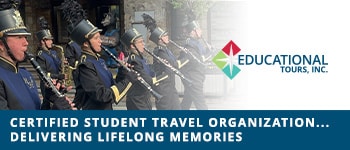Advocacy/Leadership
More to Start, Fewer to Quit (MSFQ) tips
RECRUITMENT
Engage your current students in the recruiting process. Spring is often the time of year when the next year’s class of beginners starts to take shape. When visiting prospective band students in local elementary…
Read More...
Read More...
Leadership and the Imperative of Large Scale Improvement
Leadership and the Imperative of Large Scale Improvement
Part IV of IV of the Strategic Planning Series
By Richard J. Patterson, Ph.D. ASBDA National President
As referenced in this newsletter the Strategic Planning Committee work…
Read More...
Read More...
Music Achievement Council September 2024
This month's More to Start, Fewer to Quit (MSFQ) tips come from Edward F. Protzman, Director of Bands, and Assistant Professor of Music Education, School of Music & Theater, Portland State University.
RECRUITMENT TIPS…
Read More...
Read More...
Scholarship Auditions
Scholarship Auditions
Find out More >
Read More...
Read More...
Music Achievement Council April 2024
This month's MSFQ tips come from David F. Eccles, Orchestra Program and Upper School Director, The Lovett School in Atlanta, Georgia.
RECRUITMENT TIPS
Orchestra Signing Day
In this season of sports and academic committing events,…
Read More...
Read More...
MORE TO START, FEWER TO QUIT (MSFQ) March 2024
This month's MSFQ tips come from Dr. Charles T. Menghini, President Emeritus, VanderCook College of Music, and Co-Author of Essential Elements Band Method.
Recruitment and retention are 24/7/365 jobs. Every day is recruitment day and…
Read More...
Read More...
Music Achievement Council January 2024
MORE TO START, FEWER TO QUIT (MSFQ)
Music Achievement Council | January 2024
INSTRUCTIONS: Copy / paste the content below the line into your email builder and share with the educators in your network.…
Read More...
Read More...
Choose to Teach: Florida band director Charlene Cannon
buy ivermectin - buy ivermectin online - Buy Metronidazole - buy ivermectin - Buy Viagra - buy zithromax online - Buy Metformin - buy Zithromax - Buy Prednisone - Buy Ivermectin Online
Read More...
Read More...
MORE TO START, FEWER TO QUIT (MSFQ)
This month's MSFQ tips come from Dr. Charles T. Menghini, President Emeritus, VanderCook College of Music, and Co-Author of Essential Elements Band Method.
RECRUITMENT TIPS
Now that recruitment season is over, take a few minutes to…
Read More...
Read More...
NAMM Foundation: Shine the Spotlight on Your Music Program
School districts and schools are invited to apply for the Best Communities for Music Education (BCME) award. Celebrating its 25th year, this national recognition program honors the efforts of educators, administrators, students, and…
Read More...
Read More...












